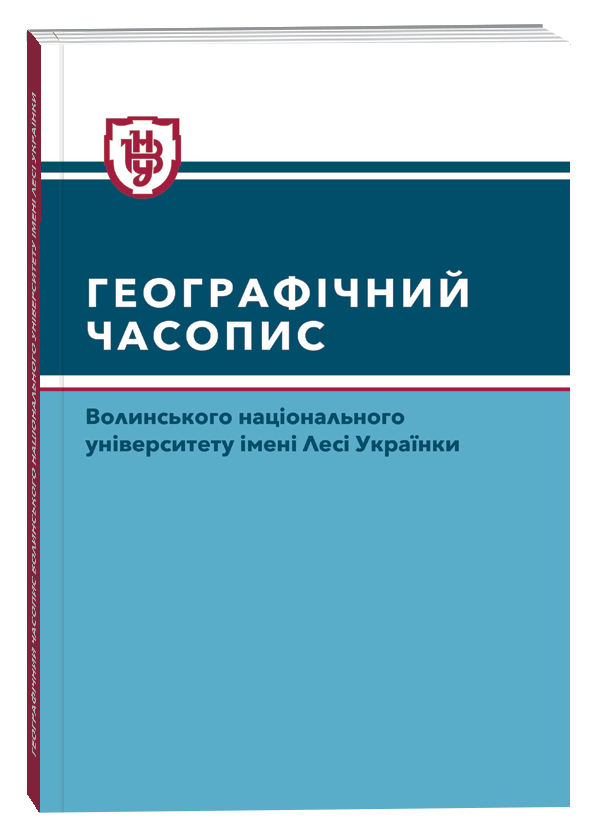FEATURES OF STRUCTURAL ORGANIZATION OF UNICAMERAL PARLIAMENTS IN AFRICAN COUNTRIES
DOI:
https://doi.org/10.32782/geochasvnu.2023.2.04Keywords:
deputy, country, population, unicameral parliament, unicameralism, AfricaAbstract
Peculiarities of the formation and structural organization of unicameral parliaments in African countries using the methods of comparative political-geographical analysis and correlational analysis are the purposes of our research. The history of the establishment of unicameralism in African countries is briefly characterized, as well as the number of countries where a unicameral parliamentary system is constitutionally established. The terms of the powers of deputies of unicameral parliaments and the number of their deputy corps were analyzed. African countries are characterized by the dominance of the five-year term authority of deputies. The number of deputies in the unicameral parliaments of African countries is very diverse. This made it possible to classify countries with unicameral parliaments into five groups based on the total number of deputies. The grouping of countries by the share of women in unicameral parliaments and the number of inhabitants per member of parliament was also carried out. According to this indicator, the countries of East and West Africa stand out, five of which are included in the list of the first 50 countries in the world. A direct correlative dependence of the number of deputies of unicameral parliaments on the number of countries' population, the size of the state territory and the number of administrativeterritorial units of the first and second hierarchical levels was revealed. It was also analyzed how many residents of the country per member of the unicameral parliament, and significant disproportionality among countries according to this indicator was revealed. It was established that in African countries, unicameral parliamentary systems are characterized by: the dominance of a five-year term of the powers of deputies, great variability in the number of deputies, in the share of women elected to parliament, and in the number of people per deputy.
References
Панкевич О. З. Державне право зарубіжних держав : підручник. Львів : Львів. держ. ун-т внутр. справ, 2018. 260 с.
Список парламентів країн світу. URL: https://uk.wikipedia.org/wiki/Список_парламентів_ країн_світу (дата звернення: 10.03.2023).
Шаповал В. М. Вищі органи сучасної держави. Порівняльний аналіз. К. : Програма Л, 1995. 136 с.
Шаповал В. М. Конституційні системи зарубіжних країн : навч. посібник. К. : Вища школа, 1992. 135 с.
Шаповал В. М. Парламент. URL: http://www.history.org.ua/?termin=Parlament (дата звернення: 15.03.2023).
Aïvo F. J. Les constitutionnalistes et le pouvoir politique en Afrique. Dans Revue française de droit constitutionnel.2015. № 4 (104). P. 771–800. URL: https://www.cairn.info/revue-francaise-de-droit-constitutionnel-2015-4-page-771.htm (data of access: 15.03.2023)
Baché D. Mali: le fonctionnement et les priorités du Conseil national de transition. RFI, 2020, 9 décembre. URL: https://www.rfi.fr/fr/afrique/20201209-mali-le-fonctionnement-et-les-priorit% C3%A9s-du-conseilnational-de-transition (data of access: 15.03.2023).
Constitution de la République Tunisienne 2022. URL: https://www.jurisitetunisie. com/tunisie/codes/Constitution_2022/menu-4.html (data of access: 10.03.2023).
Eboussi-Boulaga F. Les conferences nationales en Afrique noire. Paris : Karthala, 2003. 240 p.
Ghana. Encyclopedia Britannica. URL: https://www.britannica.com/place/Ghana/Daily-life-and-socialcustoms (data of access: 10.03.2023).
IPU PARLINE database : Structure of parliaments. URL: https://data.ipu.org/compare?field=country%3A%3Afield_structure_of_parliament#pie (data of access: 15.03.2023).
Jeugue Doungue M. Elections, constitutions et transitions démocratiques en Afrique. Bulletin de l'APDHAC. 2015. № 42, Vol. 1. P. 1–2.
Keneck-Massil J. Changement constitutionnel et durée au pouvoir en Afrique : une approche économique. Dans Revue d'économie politique. 2019. № 1, Vol. 129. P. 105–135. URL: https://www.cairn.info/revue-deconomie-politique-2019-1-page-105.htm (data of access: 14.03.2023).
Koubakin R. Au Bénin, la prochaine legislature ne durera que trois ans. URL: https://www.dw.com/fr/beninelections-legislatives-inclusives/a-64266457 (data of access: 15.03.2023).
List of legislatures by female members. URL: https://en.wikipedia.org/wiki/List_of_ legislatures_by_female_members (data of access: 15.03.2023).
List of legislatures by number of members. URL: https://en.wikipedia.org/wiki/List_of_ legislatures_by_number_of_members (data of access: 10.03.2023).
Political structure in Eritrea. Еritrea.be. URL: http://www.eritrea.be/old/eritrea-government.htm (data of access: 15.03.2023).
Roussignon H. Les nouvelles constitutions africaines : la transition démocratique. Toulouse : Presses de l’IEP de Toulouse, 1995. 202 p.
Somali K. Le parlementdans le nouveau constitutionnalisme en Afrique. Essaid’ analyse comparée à partir des exemples du Bénin, du Burkina Faso et du Togo. Droit. Université du Droitet de la Santé - Lille II, 2008. 492 p.
Tall M. Les parlements dans les Etats francophonesd’ Afrique noire : essai sur le Burkina Faso, la Côte d’Іvoire, le Togo et le Sénégal. Thèsedroit public, Poitiers, 1986, 463 p.
Tchad : l’Union africaine exige une «transition démocratique en dix-huit mois». Le Monde. 2021.
mai. URL: https://www.lemonde.fr/afrique/article/2021/05/21/tchad-l-union-africaine-exige-une-transitiondemocratique-en-dix-huit-mois_6080976_3212.html (data of access: 14.03.2023).
Thirio C. Transitions politiques et changements constitutionnels en Afrique. Le phénomène constituent. Actes de colloques de l’IFR. Toulouse : Presses de l'Université Toulouse Capitole, 2017. P. 29–49.







